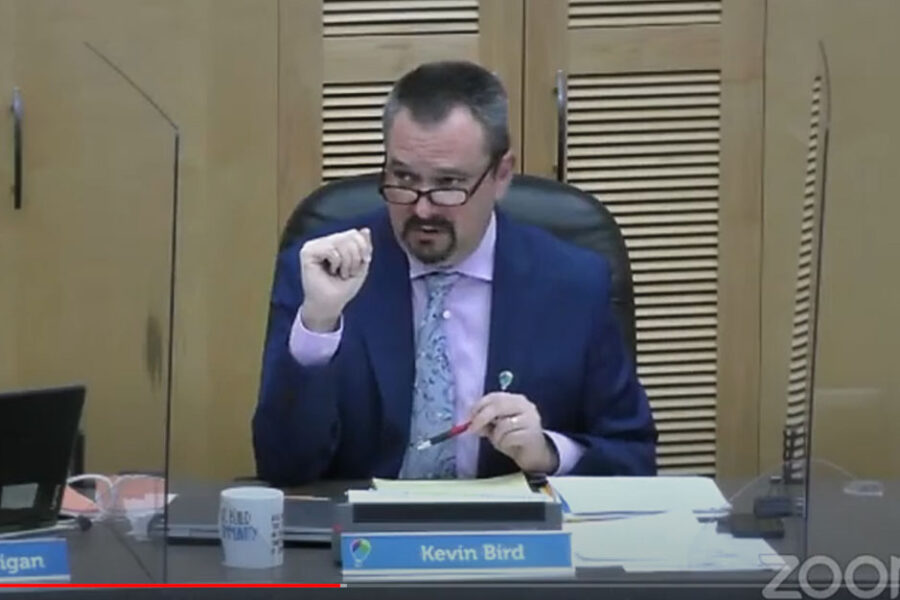
Northern Gateway Public Schools Superintendent Kevin Bird provided his School Operational Viability Report to the school board during the November 23 regular meeting. Each year, Bird provides a report on the viability of schools within the division. Policy dictates the types of things that he looks at to categorize the schools. “The idea here is that we studied the schools in the division, and based upon the results, there are certain key factors that determine whether there is a further study of a school’s viability or not,” he explained.
There are four main pieces of criteria that Bird uses:
1. Can the school provide a healthy and safe environment for students, staff, and the public?
2. Is the September 30 enrollment no less than fifty percent of what the facility can hold (space utilization rate), defined by the provincial government?
3. Can the school deliver a fulsome education program within the framework of the provincial funding model they receive, plus additional funding and external support?
4. Does the school require high costs in capital improvements, repairs, or utilities to operate?
As the schools are looked over, if they trigger two of the criteria, it rings a bell, as Bird explained it. The report listed eight-year enrollment trends to show if current numbers are stable or have cause for concern. Though shifting enrollment isn’t necessarily a trigger factor on its own, Bird explained that it gives an idea of where things are going year over year.
Bird said that four schools on the list triggered a flag due to having less than 50 percent enrollment, including Sangudo Community School at roughly 38 percent. Schools within Whitecourt were not on that list. One local school mentioned, Central School, had 78 percent enrollment.
All division schools passed when it came to providing a healthy and safe environment and for not having high operation or repair costs.
“In a previous school division, we had a situation where a school had been misbuilt, and the way the blocks had been stacked had been incorrect. Basically, the walls would all have to be shouldered, and you would have to redo every wall in the school. That would be an overwhelming cost, and that school would’ve rung a little bell here because that would have been a big deal to do,” said Bird, giving an example of what it would mean to trigger the excessive capital improvements or repairs line in the report.
When it came to delivering fulsome education programs within the framework of the provincial funding model, Bird said that all schools passed the mark except one. “We have a way that we distribute funding to schools. That’s the funding envelope. The policy also says that some additional money from the community would be included. We see okay’s (on the list) everywhere except in Sangudo. There is a concern because of how the funding formula works that the school produces enough funding to fund a portion of the program, but if it were to just rely on the things listed in the policy, there would be significant parts of the program that would not be able to run. That would mean they would not be able to provide a fulsome program.”
Bird explained that the Sangudo Community School couldn’t afford to have what it needed. “Based upon the funding formula and some additional monies from the community, the school would be able to operate with all of their staff, but there would not be a drop more. So, in other words, no photocopiers, no papers, no to all those things. So, the money pays for the staff, and that is it. Or you could look at it a different way and say all the expenses that schools have and then a portion of the staff but not all of the staff. Either way, you look at it, what it means is that the definition of fulsome programming cannot be met in the funding envelope for that particular school.” Secretary-Treasurer Tamara Spong said that the Sangudo school had been supplemented over and above their funding by about $275,000.
“Policy talks about two bells, two triggers. We’ve got some schools with one, and then we have one school with two triggers. It leads me to ask that we start a study for Sangudo school,” concluded Bird. A motion was then made to support Bird’s recommendation. Trustee Steinke spoke in favour of the study. “As part of my support of the motion, I assume we will be taking a look at all of these options to give the community some assurance that we are examining different kinds of ideas.”
The motion passed. Moments after, Trustee Steinke brought up his concern and sadness for the lower enrollment numbers in Valleyview. “I need to express my concern with declining numbers. There may be factors that, we as a division, could be considered in this.”







More Stories
Community spirit shines at large-scale youth baseball event
Birthday party chaos sung beautifully by Pumpjack Players’ youth in spring musical
Gearing up for another season of cars, cruising and camaraderie